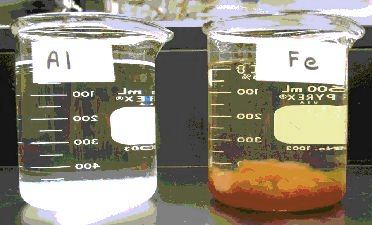

Searching
Metals Removal
With metal discharge limits being lowered, many commodity chemicals used for precipitation such as Hydroxide, Lime, Iron chemistries and magnesium Hydoxide can't reduce metal residuals in plating wastewater streams to lower limits imposed by the Federal State and Local Authorities. The most common co-precipitation chemistry added to reduce toxic metals to below imposed limits is DTC. DTC products have helped solve the lower metal number limits issues in most cases but some downsides to DTC usage are the tradeoffs. First DTC products generate a lot more sludge since it takes 12ppm or sometimes up to 50ppm of DTC to tie up 1ppm of metal such as copper. In addition, DTC is a very toxic chemistry that is also used as an industrial biocide and as an agriculture insecticide.
There have been several cases of excess DTC Getting into streams and rivers, which kils fish and other living organisms. Several years ago a plating plant in Indiana discharged high amounts of DTC with the treated plating wate to a POTW. The levels of DTC were so high that it influence the POWT and then influenced the river the POWT discharges to. The result was 117 tons of dead fish along a 50-mile stretch of the White Tail River.
The DTC Replacement
AQ151 a patented metal precipitant replacement for DTC (dimetheidithiocarbamate) has been used by numerous metal plating plants to control mixed chelated metals in discharge waters over the past two decades with great success.
Some advantages to this precipitating chemistry are:
- Generates up to 50% less sludge than DTC, Lime or Iron Chemistries.
- Lower mixed metals discharge levels can be achieved.
- Lower dosing of flocculent chemistry for liquid solid separation is an additional advantage.
- When used as prescribed, the treated water can pass toxicity testing for MPDES discharges.
- The precipitant chemistry works well in microfiltration applications.
- Typical dosages are as low as 1/2 that of DTC usage for comparable or better mixed metals removal.

